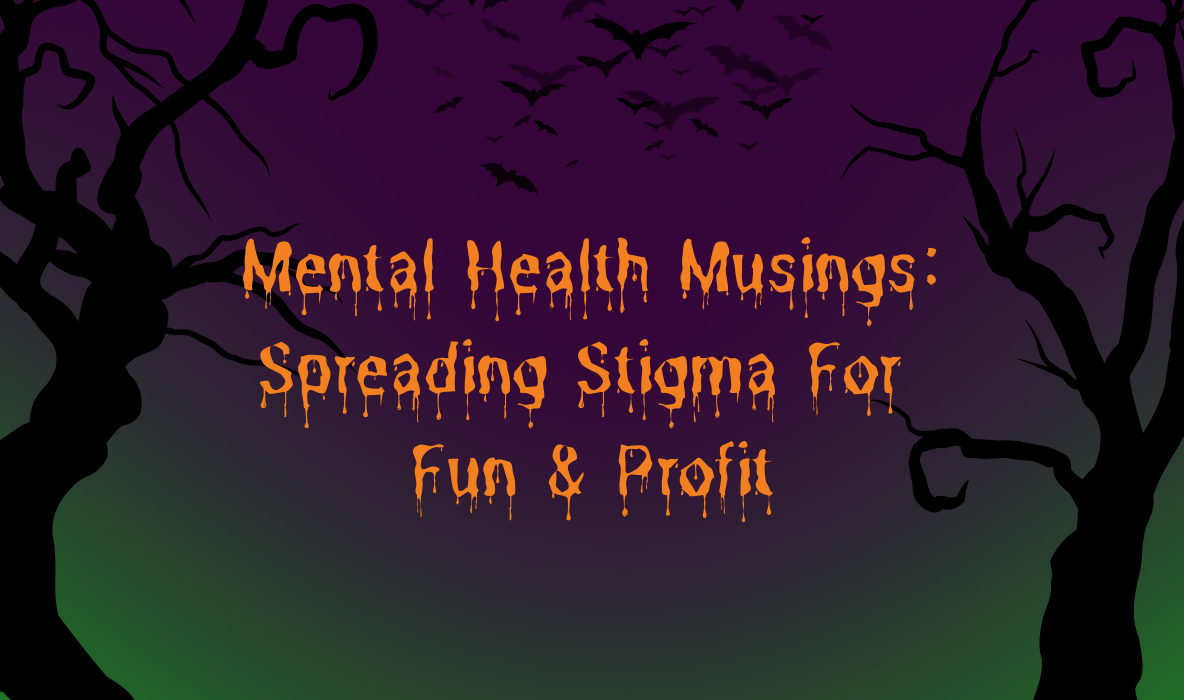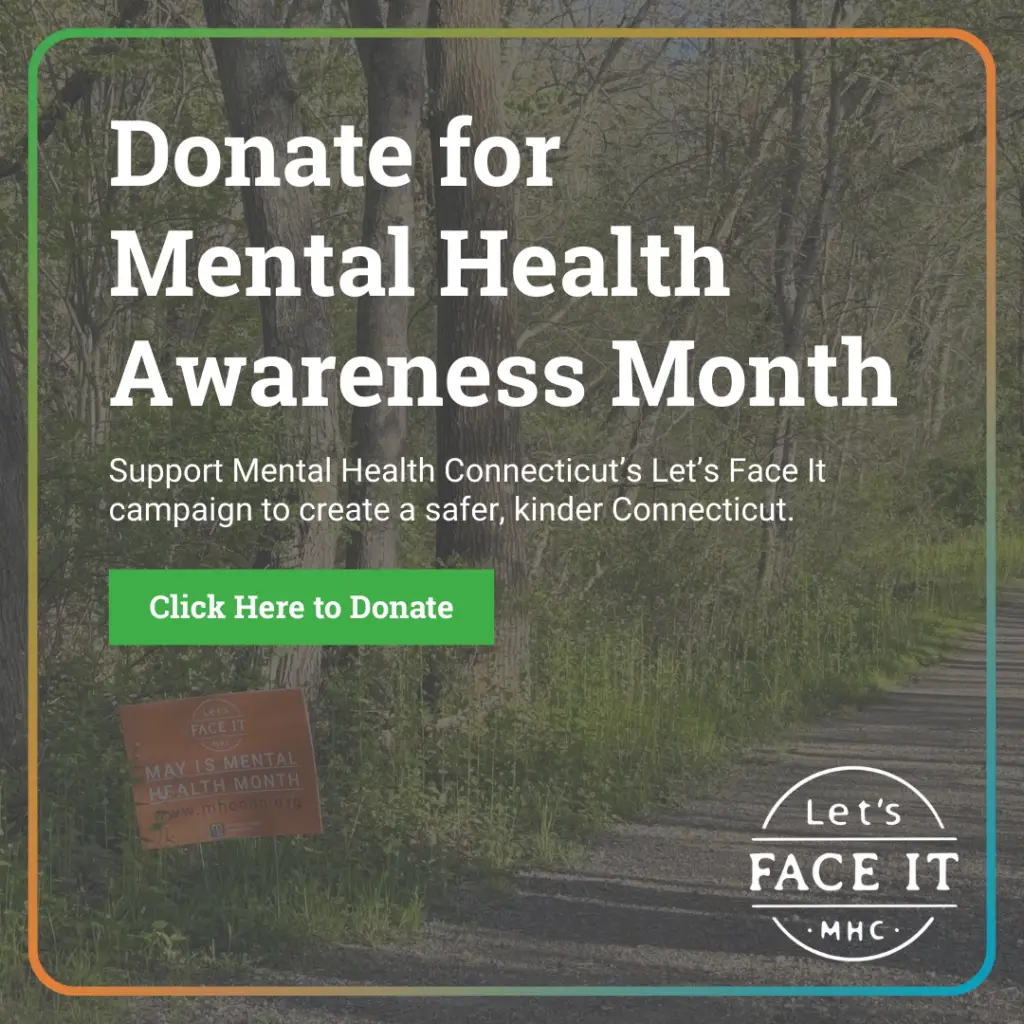CONTENT WARNING: Once again, I will be discussing the troubling topic of stigma.
Halloween is on its way. And with it comes the pumpkin lattes, the scary costumes, the corn mazes, the annual extortion of sweets called Trick-or-Treating—and the spreading of harmful and inaccurate stereotypes of mental health conditions and treatments.
The characters needed for Halloween scares seem to be more gruesome with each year. No longer are the monsters of old—Frankenstein, Dracula, the Wolf Man (I’m dating myself again, aren’t I?)—sufficient to scare the current generation of children and adolescents. Zombies seem a better bet, with their decaying flesh, bloody faces, and thirst for human flesh. But, to these undead creatures, our society frequently adds another reliable (but erroneous) icon of perceived menace, THE MURDEROUS MADMAN.
Many retailers, for example, offer masks and costumes for the holiday that embody this stereotype. These include the mask worn by Michael Myers, the fictional mental hospital escapee who first began his killing spree in the1978 film, Halloween, and has dispatched an estimated 168 innocent victims through 14 films between 1978 and 2022 (with more on the way), Adults and children can obtain not only the Michael Myers mask but also replicas of the menacing carving knife favored by the character. Also popular at Halloween are costumes and masks for Freddy Kruger, labeled in the Nightmare on Elm Street films (another franchise with multiple sequels and high body counts), as “the offspring of 1000 maniacs.” Alternatively, Halloween revelers can opt for a Hannibal (The Cannibal) Lecter mask, with or without the straitjacket costume, capitalizing on the story/film/TV show about the brilliant psychiatrist who munches on people parts and orchestrates evil from a cell in a fictional Hospital for the Criminally Insane.
Halloween is also the time for Haunted Houses. Dangerous psychiatric patients (and mad doctors in blood-stained lab coats) often show up at these attractions. Some are counted on to elicit even more fear when they are explicitly advertised as “Haunted Asylums.” Many of these are offered in locations that were, at one time, psychiatric institutions, locations that, sadly, induce unsettling images of chaos and threat even before patrons enter them.
And if you wanted to establish a similar attraction of your own, Pinterest offers a section on “Haunted Insane Asylum ideas.” https://www.pinterest.com/ideas/haunted-insane-asylum-ideas/929224590753/
Such costumes and characters, unfortunately, perpetuate the stigma that has long been a burden for people with mental health conditions. The overall message of the above Halloween staples is that people with mental health conditions are dangerous and to be feared, avoided, and locked away. Haunted asylums, with their grim appearances, threatening patients, and mad doctors perpetuate an intimidating and unappealing vision of psychiatric institutions and treatment, as well.
I know. I know. Some of you are probably thinking, “get a sense of humor, dude” (well, maybe not the “dude” part). This is all in fun.” But “fun” can still be harmful to those who are being represented in negative ways, particularly when that group of people has been disenfranchised and discriminated against for most of history. The vast majority of people with mental health conditions are NOT violent or dangerous, but a large percentage of the public believes otherwise, and we know that such inaccurate stereotypes have consequences that are neither trivial nor benign. Rejection, avoidance, and alienation—common reactions to disclosure of mental health conditions—are fueled by the kinds of messages seen during Halloween (and other times) and continue to serve as obstacles to understanding, acceptance, and recovery, including creating a reluctance to seek treatment.
In putting together this blog, I came across a news article that discussed an interesting dilemma related to this issue. According to the article, a Utah State Hospital organized a “spook alley” in 1971 for the amusement of their staff and patients during the Halloween season. The hospital residents themselves became involved in setting up the attraction and even portrayed some of the frightening characters visitors would encounter. Staff families and other community members began attending, and the attraction grew in popularity and generated a meaningful source of income for the hospital.
Mental health advocates expressed concern about the representations of psychiatric patients as chainsaw murders and mad scientists and by advertisement of the attraction as an opportunity to be frightened by “real-life psychos.” They began to push for closure of the attraction.
Eventually, the issue came to the Board of Mental Health, which oversaw the hospital. Some community members, which included individuals with family members who had been (or were still) hospitalized at the hospital, pointed out, as I have above, how the haunted castle characters reinforced negative stereotypes and were damaging to the health and recovery of people the hospital was intended to help. Mental health authorities argued, on the other hand, that there were substantial advantages for the hospital’s residents to keeping the attraction going. They noted that the income generated enabled them to offer far more recreational activities to patients than could be accomplished with a limited state allotment and that participating patients benefitted from the opportunity to “exercise creativity and challenge themselves.” It was suggested also that the “haunted castle,” as it was known, actually might contribute to reduced stigma, as many volunteers from the community came to work side-by-side with patients from the hospital.
I will not tell you the Board’s decision. You can easily find that out from the article itself (The Complex Ethics of a Haunted House Starring Psychiatric Patients – Atlas Obscura). I urge you, however, to think about what you would do if faced with this dilemma before reading the outcome. I suspect you can predict where I come down on the matter. But what about you?
Otto Wahl, Ph.D.
MHCT Development Committee Member








